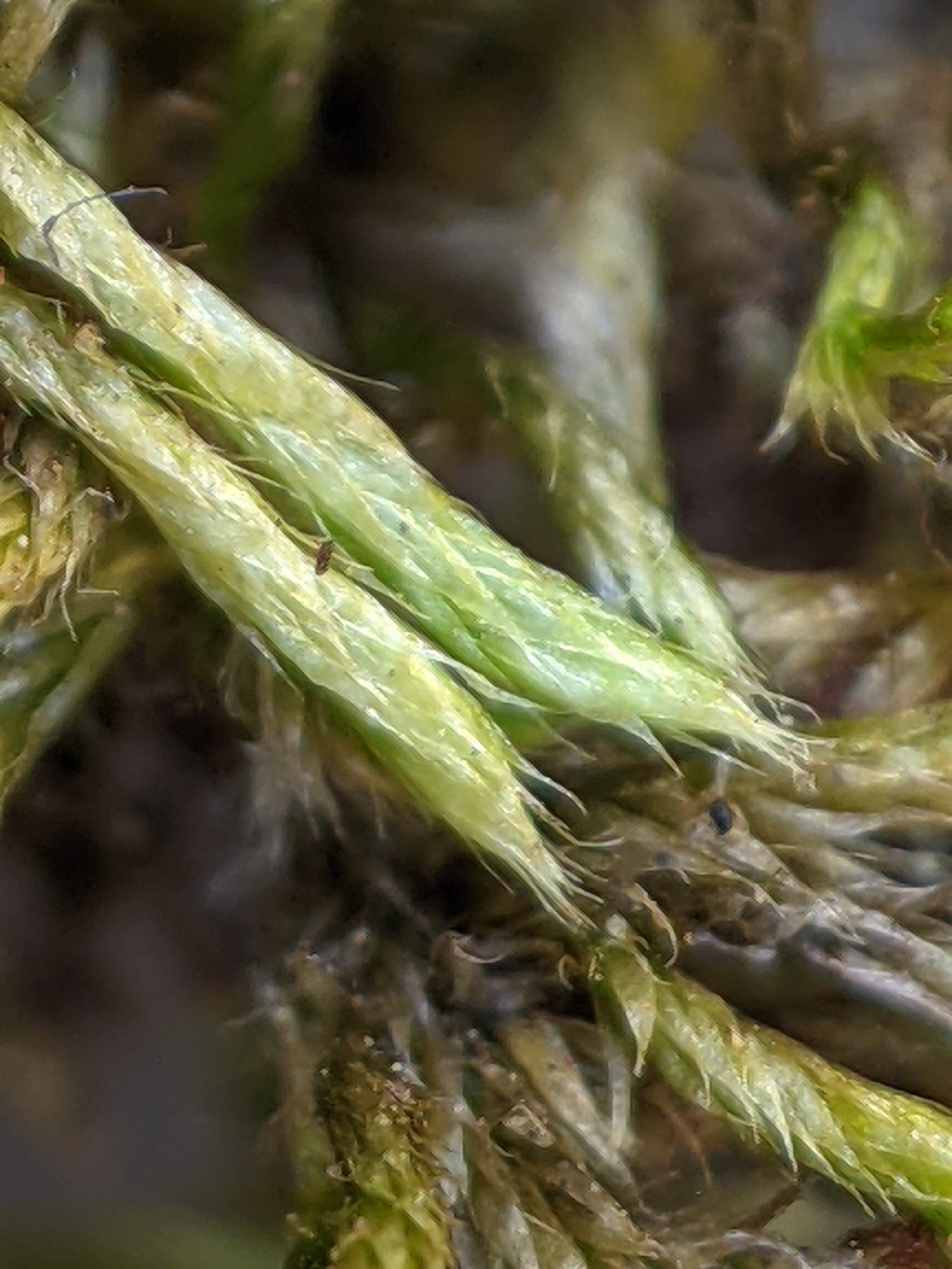Fabroniaceae
Autoicous or dioicous. Asexual propagules absent. Minute flat mats or tufts, silky, on rocks, trees, or soil. Stems creeping, simple or irregularly branched, with short and often erect branches, with rhizoids clustered near branch bases and developed on adaxial costa at leaf bases; paraphyllia absent; pseudoparaphyllia present, foliose; central strand absent. Leaves arranged around the stem and facing all directions, monomorphic, imbricate, erect- to wide-spreading when moist, loosely appressed or erect-spreading and occasionally slightly secund when dry; apex acuminate, acute (not in Victoria) or rarely obtuse (not in Victoria), often with a hairpoint; costa single, slender, extending to around mid-leaf or to the apical half, or weak and appearing absent; margin entire, denticulate, dentate, or ciliate, plane, without a border; laminal cells hexagonal to rhomboid, smooth; alar cells well differentiated, numerous, quadrate to short-rectangular. Pleurocarpous. Capsules erect, straight, exserted, operculate, without an annulus, with wavy-walled exothecial cells. Calyptra cucullate, glabrous. Operculum low conic (not in Victoria) or almost flat (not in Victoria), mammillate or obliquely rostrate. Peristome single or rarely absent (not in Victoria); exostome of 16 fragile entire exostome teeth, usually fused in pairs, sometimes with attached preperistome on outer face, rarely absent (not in Victoria); endostome and cilia absent.
Two genera, the monotypic Ischyrodon restricted to South Africa, Australia and New Zealand, and Fabronia widespread throughout temperate to tropical regions of the world and with an uncertain number species that has been estimated to be from around 11 (McIntosh 2014) to 90 (Gilmore 2012); two genera and species in Victoria.
The circumscription of the Fabroniaceae presented here follows Câmara & Buck (2012), as other genera traditionally included in the Fabroniaceae were shown by phylogenetic analyses of DNA sequences to be closer related to other families (Vanderpoorten et al. 2002; Câmara & Buck 2012). In the circumscription presented here the Fabroniaceae are a distinctive family distinguished by capsules with wavy-walled exothecial cells, as well as being minute and slender pleurocarps with a single slender costa, paired exostome teeth, and erect capsules (Câmara & Buck 2012).
 Spinning
SpinningCâmara, P.E.A.S; Buck, W.R. (2012). A re-interpretation of the Fabroniaceae, a phylogenetic perspective . The Bryologist 115: 109–117.
Gilmore, S.R. (2012). Australian Mosses Online. 3. Fabroniaceae: Fabronia..
McIntosh, T.T. (2014). Fabroniaceae, in Flora of North America Editorial Committee (eds), Flora of North America, vol. 28: Bryophyta, part 2, pp. 476–478. Oxford University Press, Oxford.
Vanderpoorten, A.; Hedenäs, L.; Cox, C.J.; Shaw, A.J. (2002). Circumscription, Classification, and Taxonomy of Amblystegiaceae (Bryopsida) inferred from nuclear and chloroplast DNA sequence data and morphology. Taxon 51: 115–122.



